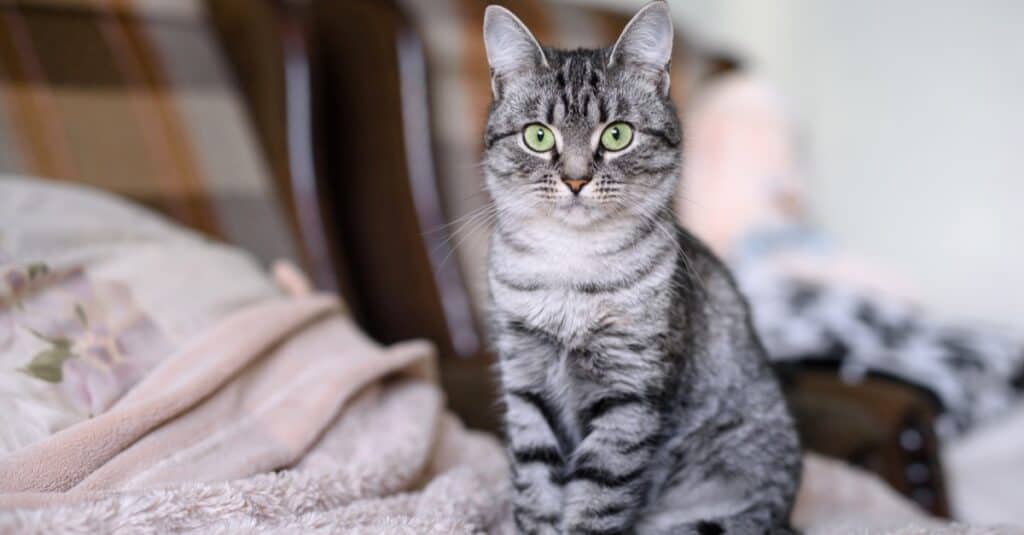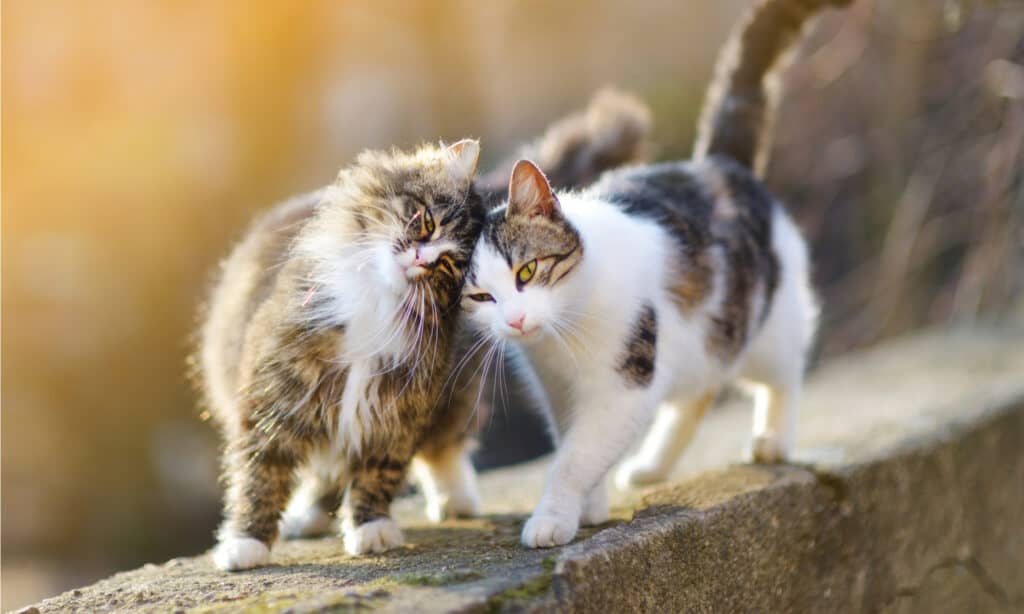When it comes to our feline friends, cats have been beside us for centuries. They make great companions and there is a vast array of different breeds and different colors available. But what about gender? Do male cats make better pets than females or vice versa? What are the differences between them?
Quite often it can be a tough choice to decide between a male cat vs female cat, and it’s a really important choice as your new friend will be with you for years to come. We’ve all heard the myth that females are aloof and standoffish while males are entirely driven by testosterone, but is it true? Join us as we discover all of the key differences between male and female cats!
Comparing Male Cat vs Female Cats

Although both make good pets, there are some major differences between male and female cats, and even then there is a big difference between the behavior of unneutered and neutered or spayed cats. But that’s not all so check out the chart below to learn a few more of the main differences.
| Female Cats | Male Cats | |
| Genitalia | Short distance between the anus and the vulva (which appears as a slit) | Longer distance between the anus and the penis, with the testicles between them |
| Sexual Maturity | 7 to 12 months | 9 to 12 months |
| Urine Marking | Rarely | Often |
| Appearance | Smaller and lighter | Larger and heavier with wide, round cheeks |
| Behavior | Aloof, stand-offish, territorial, prefer to be alone, less likely to play with others | Playful, sociable, affectionate, forms strong bonds |
The 4 Key Differences Between Male Cat vs Female Cats
The key differences between male and female cats are in their genitalia, appearance, territory marking, and behavior. Male cats have a penis while female cats have a vulva. Besides, male cats have larger physical features, especially larger cheeks than their female counterparts. And to mark their territory, urine marking is a common attribute associated with male cats.
Now, let us examine the 4 key differences between male and female cats in detail.
Male Cat vs Female Cat: Genitalia

©iStock.com/Jay Kumar
The main difference between male and female cats is their genitals. If you’ve ever brought a kitten home and wondered whether it’s a boy or a girl then there are a couple of things to look for, although it’s definitely more difficult to tell in small kittens than in adult cats. With females, the main thing to look out for is the vulva which looks like a slit, while the anus is above it. The easiest way to tell that a cat is a girl is to look for the upside-down exclamation mark, or “i” shape.
Male cats look quite different and the anus and penis are much further apart – usually more than half an inch in adult cats – while the testicles are between them. The shape to look for in males is two dots, or a colon shape (:).
Male Cat vs Female Cat: Appearance
One of the most noticeable differences between male cat vs female cat is size. Male cats are usually larger and heavier than female cats. This is particularly obvious if the male was not neutered until after sexual maturity was reached.
Additionally, male cats tend to have large, wide cheeks and a more rounded face than females. This is because of the testosterone in males. Large cheeks are used to signal physical fitness and strength to other cats – both male and female. This can signal readiness for a fight with other males as well as to attract females. Males often retain these large cheeks even after they are neutered.

©Lalandrew/Shutterstock.com
Male Cat vs Female Cat: Urine Marking
Although not every male cat does it (and some females do), urine marking outside of the litter box is a notable difference between males and females. Quite simply, this is because males have much more reason to do it than females. Urine (or spray) marking is when a cat sprays a small amount of urine onto a surface. Just like big cats in the wild do, domestic cats spray urine to mark their territory and state their presence in the area.
However, cats also use it to send other messages, such as to advertise that they are looking for a mate. Therefore, unneutered males are far more likely to urine mark as they are driven by their testosterone. But even neutered males can still do it too. Even some females urine mark but they are far less likely to do so than males.
Male Cat vs Female Cat: Behavior & Personality
Quite possibly the biggest difference between male and female cats is their personality. However, whether or not they have been neutered or spayed actually plays a major role in their behavior. Unneutered males are more likely to be aggressive towards other males, mark their territory, and to actively seek out females in heat. However, when they are neutered they generally become much more laid back and are extremely sociable, playful, and affectionate. They also form close bonds, both with their owners and with other cats.
On the other hand, females are stereotyped as being aloof and standoffish. However, that’s not strictly true. Females that have not been spayed spend much of the time that they are in heat searching for a mate. During this time they yowl a lot and can actually be pretty loving and attention-seeking.
Females that are spayed no longer go into heat, so they don’t perform that behavior anymore and are generally more relaxed. However, they don’t lose their nurturing instinct and can often “adopt” other kittens that are in the household. Despite this, females are still less likely to be playful and will often dominate other cats, particularly if they try to invade her favorite spot!
However, although the behavior of a cat can be influenced by its gender, the way that it is raised can also have a major impact. Cats that are raised with others or in a busy household are often naturally more playful and sociable than one raised on its own. Similarly, cats which are around dogs from a young age are less likely to be frightened of them.

©iStock.com/slowmotiongli
Male Cat vs Female Cat: Lifespan
The longest that any domestic cat can hope to live is to the age of 30, though this is not the norm. Most cats don’t live beyond 15 years. And regardless of being male or female, cats that are neutered or spayed typically live longer than those that are not. Indoor cats also tend to outlive their outdoor counterparts. Crossbreed cats live longer than pure breeds. But when comparing the sexes, female cats tend to outlive males by an average of two years.
Is It Better to Have Two Cats of the Same Gender?

If you’re thinking of having two pet cats, it’s best to choose a male and female rather than two of the same sex.
©MNStudio/Shutterstock.com
The answer is no, it’s not better to have two cats of the same gender. If your cat seems to be experiencing single-cat syndrome, and you’ve decided to find it a mate, it’s best to choose a cat of the opposite sex. Cats can be territorial and have disputes for dominance. This is especially true of cats that are the same sex. They don’t always like the idea of sharing space, and two of the same sex can make territorial issues worse.
While a lot depends on the individual cats’ temperaments, as well as age and how they were raised, a male and female tend to assimilate together better than two of the same sex. There’s not much difference between trying to pair up two females or two males–either scenario will play out with territorial battles. While it’s true that a male cat can even get aggressive with a female roommate, seeking to assert his dominance, they typically get along better, and can even be quite affectionate with one another.
The photo featured at the top of this post is © Sarah Fields Photography/Shutterstock.com
FAQs (Frequently Asked Questions)
Can you tell whether a cat is male or female by its color?
Although it is not an exact science, sometimes cats are more or less likely to be a certain gender based on their coat color. In particular, calico or tortoiseshell cats are almost always female. On the other hand, orange or orange and white cats are almost always male.
Which cats make better pets - male or female?
When choosing a cat it comes down to personal preference as to whether to choose a male or a female as both make equally good pets. But it is possible that one might be more suited to your lifestyle than the other. For example – someone with children might want a playful and affectionate cat in which case a (neutered) male might be more suitable.
However, someone who works a lot might be more suited by a female who doesn’t necessarily need (or want) as much hands on attention. Despite this, it’s important to stress that each cat is an individual – there are no strict rules – and sometimes even the breed can play a part in behavior and whether a male or a female is more suitable.
Do cats get along better with other cats of the opposite gender?
If you’re planning on getting more than one cat then you’re maybe wondering whether a male and a female cat would get along better than two of the same gender. However, studies have shown that there is little difference between how cats of the same or different gender get along. Rather, temperament is believed to be more important as two cats of a similar temperament (although not two dominant or aggressive cats) get along better, or two littermates if they are kittens.
Thank you for reading! Have some feedback for us? Contact the AZ Animals editorial team.







